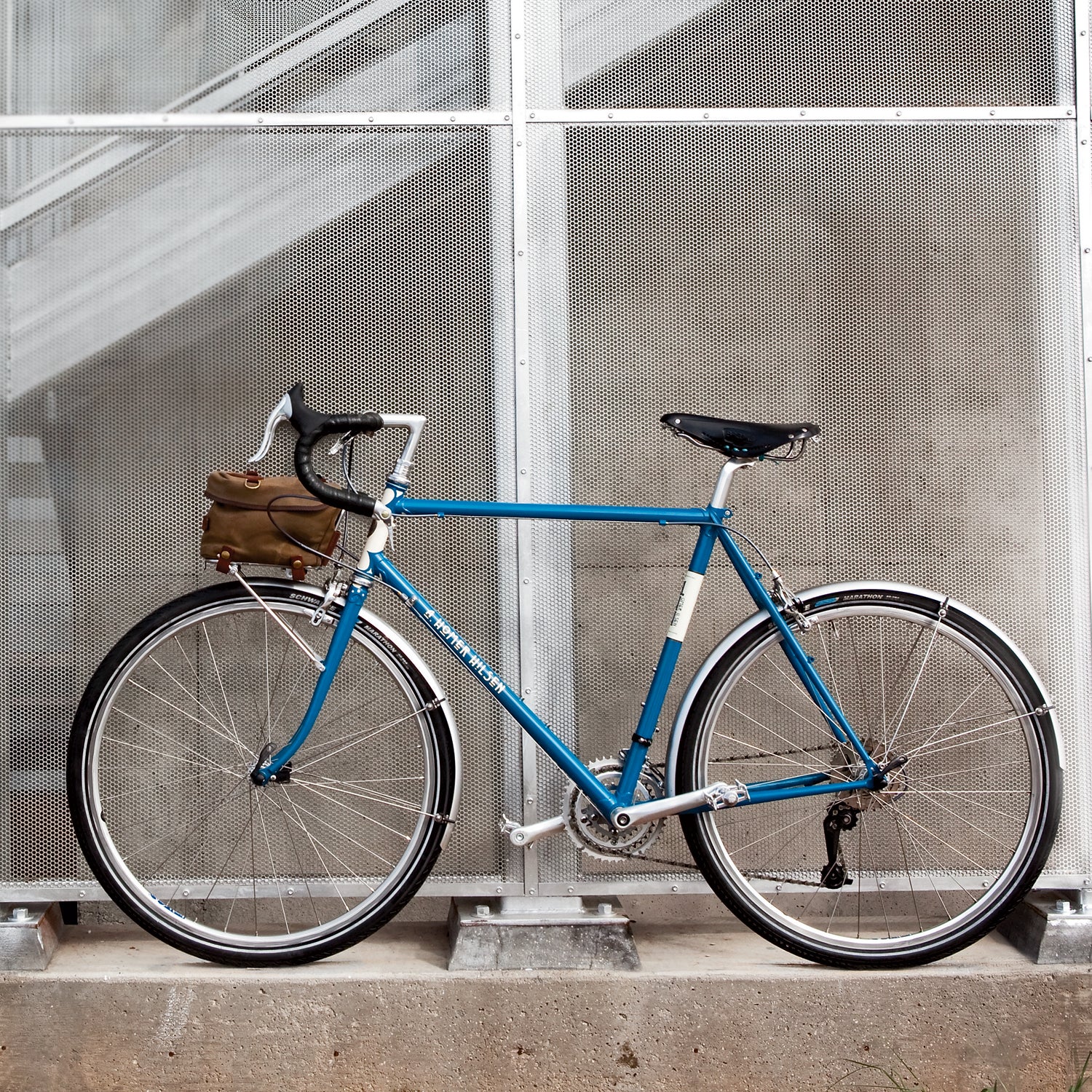The Age of Bike Commuting is upon us. Across the nation, gridlocked cities are carving out cycling lanes, installing racks, and otherwise embracing pedal power. To help you make the switch, we've exposed the most common whines for what they are: stall tactics. Read on—the truth will set you free.
Excuse #1: It's too dangerous.
The Truth: That really depends on you. If you seek out less traveled routes, and ride wisely and defensively, odds are very good that your commute will be unremarkable—in the nice, pain-free way. Cycling-safety research is not yet at motor-vehicle levels, but studies have produced heartening results. The Transportation Research Board reports an average accident rate of one per every 16,750 miles for bike commuters, and one study by the UK Department of Transport found that roughly 19.9 million miles were pedaled per cycling fatality there. So ride intelligently among cars, wear a helmet—Lazer's ($175) features the best, and most comfortable, fit system we've used—and, at night, light yourself up for maximum visibility. In back, mount a flashing red taillight, like Princeton Tec's ($30). Up front, you want a headlight with a flash mode. We prefer a powerful rechargeable unit, like Light & Motion's 200-lumen ($270), but if that seems like overkill for your ride, check out Princeton Tec's 50-lumen EOS Bike ($45).
Dealing with Bad Weather
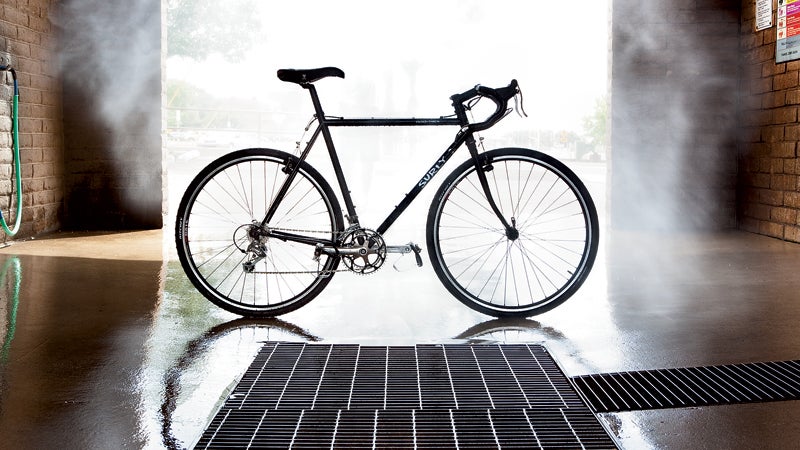
Excuse #2: It rains too much in my town.
The Truth: It's easy to keep dry and warm on the bike. In rainy Portland, Oregon, plenty of folks cycle through winter in thrift-store wool and waterproofed leather boots. Fenders, of course, are a must—and you can't beat Velo Orange's (pair, $48). For outerwear, though, some of us prefer high-tech fabrics. The Showers Pass ($230) is a highly breathable, waterproof eVent jacket with lots of venting and smart details; the optional hood ($25) fits under a helmet. Gore Bike Wear's ($80) laugh at rain and wind. The Showers Pass Hybrid Zip-Off ($100) soft-shell trouser converts to knickers. And Merrell's leather ($140) is a storm-proof town-to-trail shoe that's great for flat pedals.
Making Time
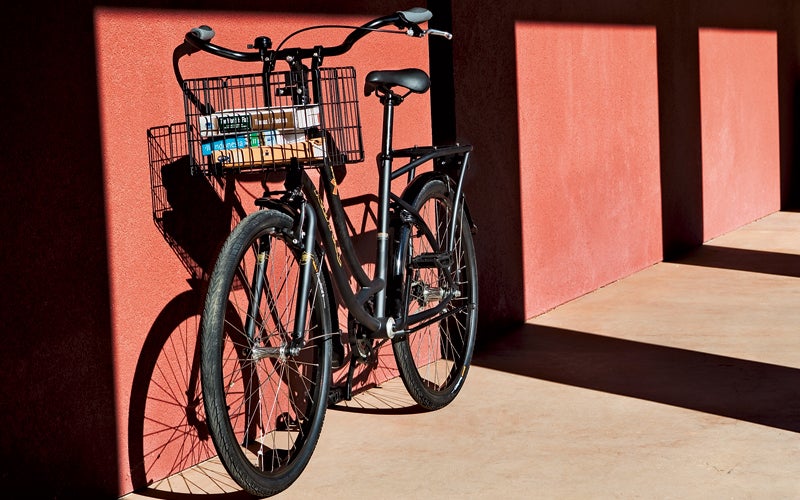
Excuse #3: I don't have the time.
The Truth: Cycling may be faster. Clock your circuit both ways, at the normal times, and see. But even if the car or train wins, consider this: If you have time for cardio work, you have time to ride. Swap out that spin class for the real world. It's a fair trade. A study in Medicine & Science in Sports & Exercise found that, for new commuters, cycling just 3.7 miles at low intensity only three times a week increased external power and oxygen uptake as much as a training program. Imagine if they really committed to the commute.
Cleaning Up
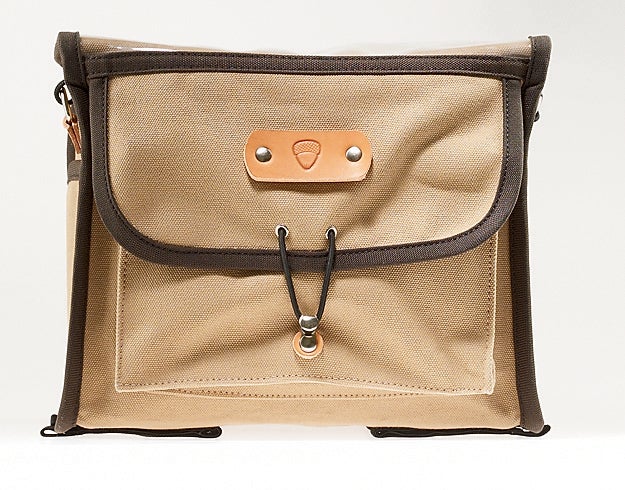
Excuse #4: I need to look nice at the office, not be Sweaty Commuter Guy
The Truth: You can keep your riding to the cooler months—or use a little strategy to roll all year long. No shower at the office? Keep washcloths, deodorant, etc.—some even use baby wipes—in your desk and freshen up at a bathroom sink after a five-to-ten-minute cooldown. Cold water on your hands helps lower your core temperature, and a glass of ice water and a fan at your desk do wonders. You don't have to change clothes, either. Moisture-wicking and waterproof-breathable performance fabrics have made their way into stylish designs, so not only can you avoid the wardrobe shuffle; you might just improve your look, too. Nau's waterproof, four-button ($200) looks like a slim-cut blazer from Savile Row. Dunning's button-down ($125) repels moisture brilliantly. Outlier's very light and urban ($180) shed all things wet and greasy but breathe freely. And if you can do jeans, don't ruin your Levi's. Swrve makes très cool : seamless crotch, articulated knees, and a little bit of stretch ($100). For shoes, you want waterproofed leather, like Blundstone's ($160).
Eliminating Pain
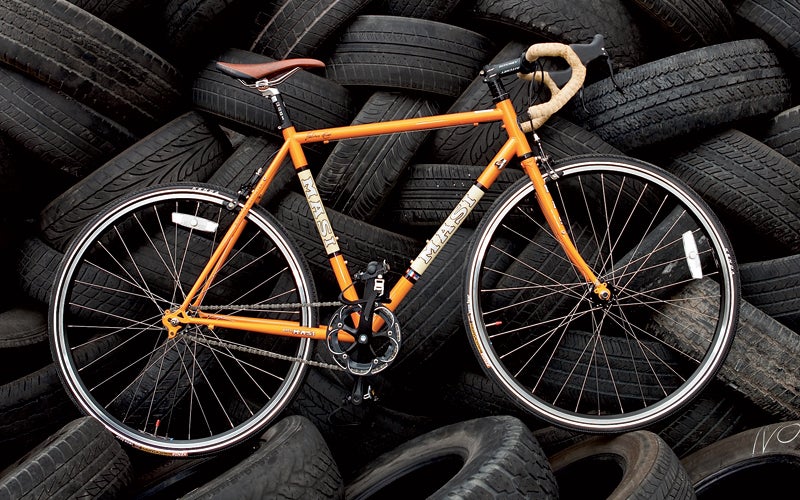
Excuse #5:It hurts when I ride.
The Truth: That's easily fixed, but your bike might not fit you. Here are the five keys to a plush ride, according to le grand French constructeurs of old.
- Fit: To eliminate back, neck, and wrist pain, your saddle should be close to even with your bars. And if the distance between the two doesn't feel right (meaning you're neither scrunched up nor overstretched), nothing will.
- Material: Lightweight chromoly steel is springy (absorbs shocks), strong (is very hard to bend or crack and, unlike carbon, will never break), durable (will most likely outlive you), and practical (is easily repaired).
- Saddle: Leather takes on the shape of your derriere for years of untroubled riding. We love two models with anatomical cutouts, the Brooks ($142) and the Selle An-Atomica Titanico LD Watershed ($180). The Titanico is softer out of the box but will reach the end of its life sooner. Not into leather? Top pick: the WTB ($60–$140), a padded shell with a cradling shape.
- Bars: Make sure your wrists aren't bent awkwardly. Drop bars offer several hand positions. The ($54–$65) is a favorite.
- Tires: Bigger equals superior comfort, traction, stability, and versatility. You don't want to go any lower than 28mm in diameter, and 32 to 40mm is more like it. And don't pump them to capacity; try 75 percent of max to start, and then experiment.
Making It Easy
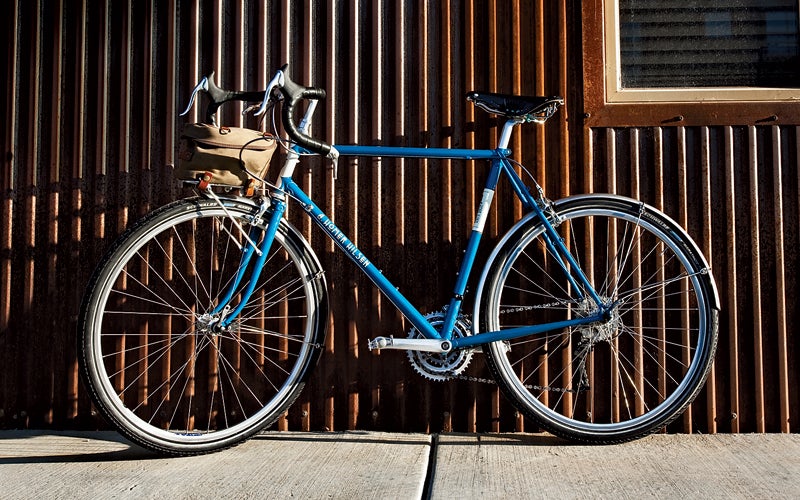
Excuse #6: It's just too hard.
The Truth: Here it is, straight from Grant Petersen, of . Because who better than the godfather of modern utility cycling to help you stop making excuses and get off the gas?
Chain-smoking salarymen in Tokyo, ladies in Amsterdam, and oldsters in Oxford grab a bike when they want to go somewhere. But they don't necessarily ride for health or to be good stewards of the planet. In Japan, the car is the slow, high-hassle, expensive way to move. Europe's urban centers predate the car and tend to have short, bike-friendly commutes. Bicycling is the path of least resistance in these cases, so it's easy to be virtuous.
But in America, it's so easy to be bad. You almost need superpowers to be good. Rah-rah rants about the joys of pedaling, the health benefits, and the wide selection of commute-worthy bikes are all but powerless within a pro-car infrastructure. If they worked, we'd be right up there with the best bike-commuting countries, where 40 to 70 percent ride daily. Our score: 0.48 percent. Our problem is partly a lack of government-imposed disincentives—like the much higher fees and operating costs associated with owning a car in many other countries—but there's also our genetic proclivity to conserve energy whenever possible, like a little Lucifer on your shoulder constantly jingling the car keys.
Since it's unnatural, even masochistic, to impose your own disincentives, find another way to break the car habit and get the bike habit. Breaking habits is hard but not impossible, and you have to give a new routine time to take root. The first step is making it easy, and one way is to get a suitable bike. Start when the weather is best, because it's not easy for bike commuting to take root in the hot, muggy summer or dark, cold, wet winter, when it's so hard to resist the comfort of a temperature-controlled sedan, listening to your favorite tunes and sipping coffee. But in time you may come to love riding through all four seasons. Nasty streets and sleet? Bring it on!
Whatever you do, just make it so you're driving less and pedaling more. The more you do it, the easier it gets. And if all those far-flung folks can do it, so can you. You may have a harder system to fight, but it's a good fight.
Lock This Way
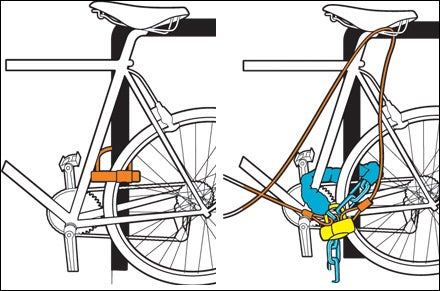
Relaxed? Kryptonite ($62)
Nervous? Kryptonite New York Fahgettaboudit ($100) and, for your saddle and front wheel, KryptoFlex 1007 Looped Cable 7' ($12)
Street Safety
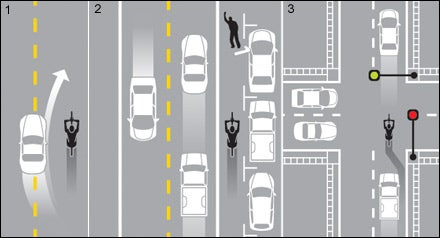
No Bike Lane?
- Take the rightmost third of the lane.
- Own it, and, please, be very predictable.
- Ignore impatient honkers; don't engage hostile ones.
In the Bike Lane:
- Watch out for car doors and pedestrians.
- Never swerve into traffic; brake hard, in-line.
- Pass cyclists carefully with “On your left!”
At Intersections:
- Never assume a car won't hit you while it's turning.
- Take the lane after a visual check and hand signal.
- Move slowly to the right once you're through.
Blog Maestro
wants you to keep a few things in mind.
- You're Not Saving the World: Ever hear a V8 gurgling and think, What a space-consuming, earth-fouling fascist? Well, if you think you're doing something special by riding a bike, you're just as toxic. Smug is worse than smog.
- Ride Like a Grown-Up: In a big city, bikes are faster than cars and motos. While straddling such a formidable machine, act like it. Riding effortlessly through traffic makes a point; riding against it, a.k.a. “salmoning,” makes you look like a moron. And forget the sidewalk. If you want to be taken seriously, ride in the street.
- Know Your Bike: It's OK not to be a mechanic. But you need to know how to fix a flat and should be ready to do so at all times. Riding without equipment and knowledge is like not wearing underpants—not in the good, sexy way but in the disgusting, chafing way. Have a patch kit, tube, and pump, and know how to use them.
- Don't “Reclaim the Streets”: Think the car is your adversary? That's defeatist. Bikes were here first: Charles “Mile-a-Minute” Murphy was setting records when cars put out only slightly more horsepower than Angela Lansbury on a charity ride. The road is (still) yours.


